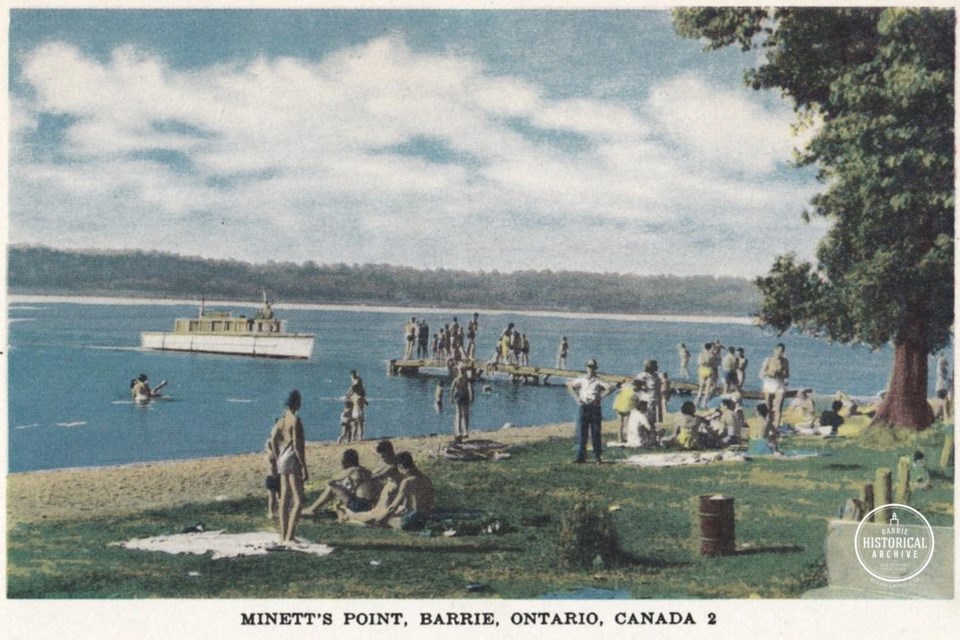This ongoing series from Barrie Historical Archive curator Deb Exel shows old photos from the collection and one from the present day.
Minet’s Point
In 1833, the Crown granted land on this point to a former British soldier, Peter Monett. As he was one of the few early settlers in that area at the time, the point was referred to as Monett’s Point, or sometimes Manett’s Point, until it eventually mutated into what we now call Minet’s Point.
By the 1880s, electric railways were the craze. Eventually, in 1895, the Barrie and Allandale Street Railway Company was chartered to establish a local commuter line. This charter permitted the company to purchase 75 acres at Minet’s Point to create a sports park and build an electric railway line linking Minet’s Point and the south shore to St. Vincent Park in the east end of Barrie.
According to the Toronto Globe, the proposed railway would provide public transportation around the bay, through the downtown, connecting lakeside parks, beaches and ferries for residents and tourists.
More importantly, as Barrie was a hub where five rail lines intersected, it was considered part of an ideal solution for Toronto access to the beautiful Barrie area vacationland as an alternative to the challenge of getting to Muskoka.
There was the added possibility of extending the lines to reach cottages on the south side of the bay, which were owned by prominent citizens.
Can you imagine a streetcar line in Barrie?
Roads, however, would be city council’s priority by 1897 and the Barrie Allandale Street Railway would never be built.
Minet’s Point was still destined to be an attractive recreational area — however you managed to get there — and it became a favourite location for athletics such as ball, cricket, biking and lacrosse, dancing, and in the summer, water activities.
According to Dr. A.T. Little (Ministry of Health) in the Aug. 2, 1934 edition of the Northern Advance, Minet's Point was the only safe place for swimming due to polluted water in Barrie.
The dance pavilion at the point was a busy social spot. During the Second World War, Delaney boats would drive Canadian Armed Forces personnel over to Minet's Point from downtown to attend the dances. A round trip in 1941 cost 25 cents.
The Strathy family acquired Minet’s Point at some point, but sold the estate in 1945 to Sam Stransman, a local merchant. The sale included the lakeshore, park, change houses, dance pavilion, refreshment booth and 54 lots, estimated at a value of $300 to $500 each.
Minet’s Point continued to attract a summer crowd. There were about 100 cottages and the seasonal population averaged about 1,200 people. (A summer Post Office was established in 1952, becoming year-round in 1966, then closing in 1974).
But once again, in the summer of 1950, pollution from Barrie’s sewage disposal plant, which opened in 1940, made swimming unsafe and the only places deemed OK were east of Minet’s Point on the south shore and St. Vincent Park on the north side of the bay.
Barrie’s history is filled with fires and flood and Minet’s Point has not been spared its share. In October 1954, Minet’s Point experienced extensive flooding during Hurricane Hazel. Just a few years later, on July 10, 1958, the popular dance pavilion was destroyed by fire. Tragedy and devastation would strike again on May 31, 1985, when the community of Minet’s Point was in the path of an F4 tornado as it ripped through Barrie.
Minet’s Point became part of Barrie when it was annexed from Innisfil Township on Jan. 1, 1982.








